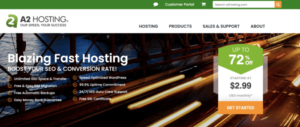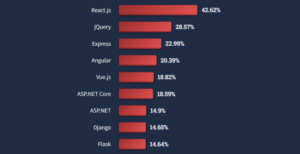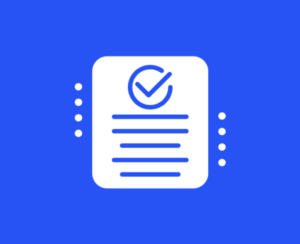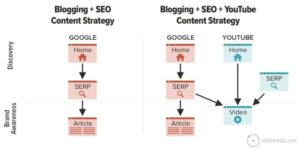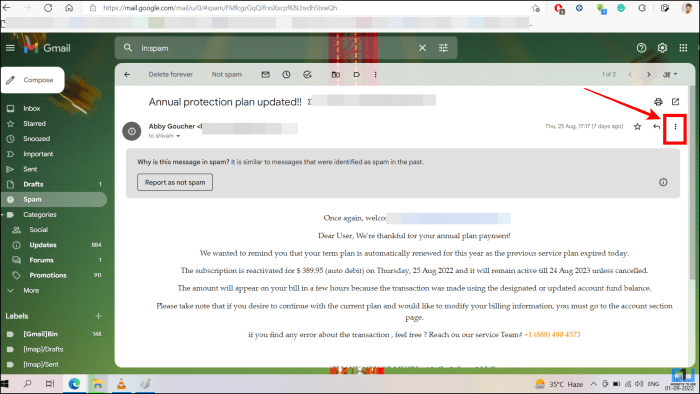
Spam blocker for Outlook and Gmail is essential for anyone looking to maintain a clean and efficient inbox. In today’s digital age, where email communication is a cornerstone of productivity, the presence of spam can significantly hinder your workflow. Understanding the importance of spam blockers not only boosts your efficiency but also protects you from potential threats lurking in unsolicited messages.
Spam blockers play a crucial role in distinguishing important emails from unwanted clutter, ultimately saving time and enhancing security. By exploring the unique features of spam blockers in Outlook and Gmail, users can make informed decisions about managing their email effectively, ensuring a more streamlined experience.
Spam Blocker Importance
In today’s digital landscape, spam emails pose a significant threat to productivity and security for users of Outlook and Gmail. With an incessant flow of unsolicited messages, having a reliable spam blocker is essential for maintaining an efficient workflow and protecting sensitive information. Spam blockers serve as a frontline defense, sifting through incoming emails to filter out unwanted content. Without such safeguards, users may find themselves inundated with irrelevant messages, which can lead to missed important emails and increased stress.
The absence of a spam blocker can also create vulnerabilities for phishing attacks and malware, potentially resulting in substantial data breaches.
Comparison of Spam Blocker Features in Outlook and Gmail
Understanding the features of spam blockers in Outlook and Gmail helps users choose the best options for their email management needs. Each platform employs unique technologies and strategies to combat spam effectively. Both Outlook and Gmail utilize advanced algorithms and machine learning to recognize and filter spam. However, their approaches do differ in functionality:
- Outlook: Outlook’s spam blocking capabilities include customizable filters that allow users to specify certain criteria for blocking emails. The “Focused Inbox” feature intelligently categorizes emails into relevant tabs, separating important messages from less significant ones.
- Gmail: Gmail’s spam blocker is highly effective due to its continuous learning feature, which adapts to users’ behaviors and preferences over time. It also provides a “Report Spam” button that helps improve its filtering accuracy by learning from user feedback.
Implementing spam blockers from either platform not only streamlines email communication but also bolsters security measures against potential threats.
“Effective spam blocking not only enhances productivity but also safeguards sensitive information from cyber threats.”
By comparing these features, users can make informed decisions about the email services they choose, ensuring that they can communicate efficiently while minimizing disruptions from spam.
Implementing Spam Blockers

Utilizing spam blockers is essential for maintaining a clean and secure email environment. By effectively activating and customizing these features, users can significantly reduce unwanted emails that clutter their inbox and pose potential security risks. Below is a guide that Artikels the steps to activate spam blockers in Outlook and Gmail, as well as recommendations for third-party tools.
Activating Spam Blockers in Outlook
Activating the built-in spam blocker in Outlook is straightforward. Follow the steps below to enable this feature:
- Open Outlook and click on the “Home” tab in the top menu.
- Locate the “Junk” drop-down menu button in the “Delete” group.
- Select “Junk E-mail Options” from the list.
- In the new window that opens, choose your desired level of protection. Options include:
- No Automatic Filtering: This option does not filter any messages.
- Low Filtering: This option filters only the most obvious junk emails.
- High Filtering: This option catches most junk emails but may also capture some legitimate messages.
- Safe Lists Only: Only emails from your Safe Senders list will be allowed in your inbox.
- Click “OK” to apply your settings.
Customizing Spam Filter Settings in Gmail
Gmail allows users to customize spam filter settings to ensure optimal protection against unwanted emails. Here’s how you can optimize these settings:
- Log into your Gmail account on a desktop browser.
- Click on the gear icon located in the upper right corner to open “Settings.”
- Select “See all settings” from the drop-down menu.
- Navigate to the “Filters and Blocked Addresses” tab.
- Click on “Create a new filter” to set up specific conditions for filtering.
- In the filter options, you can specify:
- Emails from specific email addresses or domains.
- s in the subject line or message body.
- Size of the email.
- After setting your parameters, click “Create filter,” and choose how you want Gmail to handle these emails, such as marking them as spam or deleting them.
Recommended Third-Party Spam Blocker Tools
For enhanced spam protection, several third-party tools are compatible with both Outlook and Gmail. These tools can provide additional filtering capabilities and features. Here’s a list of some top recommended tools:
- SpamTitan: A powerful spam filtering tool with advanced detection algorithms.
- MailWasher: Allows users to preview and filter their emails before they reach their inbox.
- Clean Email: Focuses on organizing and cleaning up your inbox while blocking spam.
- Barracuda Essentials: Offers email security solutions and advanced spam filtering.
- Abusix: A comprehensive email security solution that protects against spam and phishing attacks.
Internet Security and Spam Prevention
In the digital age, maintaining internet security is paramount, especially when it comes to email communications. Spam blockers play a crucial role in safeguarding users from malicious content that can compromise personal information and overall online safety. By filtering out unwanted messages, these tools not only reduce clutter in inboxes but also enhance protection against cyber threats, making email usage safer for everyone.Spam blockers significantly enhance the overall internet security for email users by intercepting unsolicited messages that may contain harmful links or attachments.
They serve as the first line of defense against various cyber threats, including phishing scams and malware distribution. By preventing these harmful emails from reaching users, spam blockers mitigate the risk of identity theft and financial fraud, thereby promoting a secure online environment.
Best Practices for Safe Email Handling
To further bolster email security and avoid falling victim to spam and phishing attacks, users should adhere to several best practices. Understanding and implementing these measures can significantly minimize risks:
- Always verify the sender’s email address before opening any messages. Phishing emails often mimic legitimate sources, so ensuring authenticity is crucial.
- Never click on suspicious links or download attachments from unknown sources. These can easily lead to malware infections or data breaches.
- Use strong, unique passwords for email accounts and enable two-factor authentication where possible. This adds an additional layer of security.
- Regularly update security software to capture the latest threats and vulnerabilities. Keeping software up-to-date ensures robust protection.
- Be cautious of emails requesting sensitive information, such as passwords or personal details. Legitimate companies seldom ask for private information via email.
“An ounce of prevention is worth a pound of cure.”
Connection Between and Spam Blockers
The relationship between and spam blockers is often overlooked but is essential for effective site promotion strategies. Spam blockers can influence email deliverability, which directly impacts marketing campaigns aimed at driving traffic to websites. When sending promotional emails, having a clean and reputable email list is vital. Spam blockers assess the sender’s reputation, which is influenced by how often emails are marked as spam.
A poor sender reputation can lead to emails landing in the spam folder, severely limiting outreach effectiveness. To maintain a strong connection between and email marketing, consider the following strategies:
- Regularly clean your email list to remove inactive or unengaged subscribers, as high bounce rates can harm sender reputation.
- Engage subscribers with relevant, high-quality content to increase open rates and interactions, reducing spam reports.
- Monitor campaigns using analytics tools to identify which emails perform well and adjust strategies accordingly. This ensures ongoing improvement in engagement and compliance with spam regulations.
“Quality over quantity reigns supreme in email marketing.”
Ending Remarks

In conclusion, utilizing a spam blocker for Outlook and Gmail is more than just a convenience—it’s a necessity for safeguarding your online communication. By implementing these tools and best practices, you can enjoy a more organized inbox and a significant reduction in spam-related risks. Stay proactive in your email management, and reap the benefits of a cleaner, safer digital workspace.
FAQs
What is a spam blocker?
A spam blocker is a tool or feature that prevents unwanted or malicious emails from reaching your inbox.
How can I tell if my spam blocker is working?
You can check your spam or junk folder to see if legitimate emails are being filtered out and also monitor the volume of spam in your inbox.
Are spam blockers 100% effective?
No, while spam blockers are highly effective, they may not catch all spam or could mistakenly filter out legitimate emails.
Can I customize my spam filter settings in Outlook and Gmail?
Yes, both Outlook and Gmail allow users to customize spam filter settings to suit their preferences and improve filtering accuracy.
What should I do if I receive spam in my inbox?
You should mark it as spam and consider adjusting your spam filter settings to prevent similar emails in the future.
